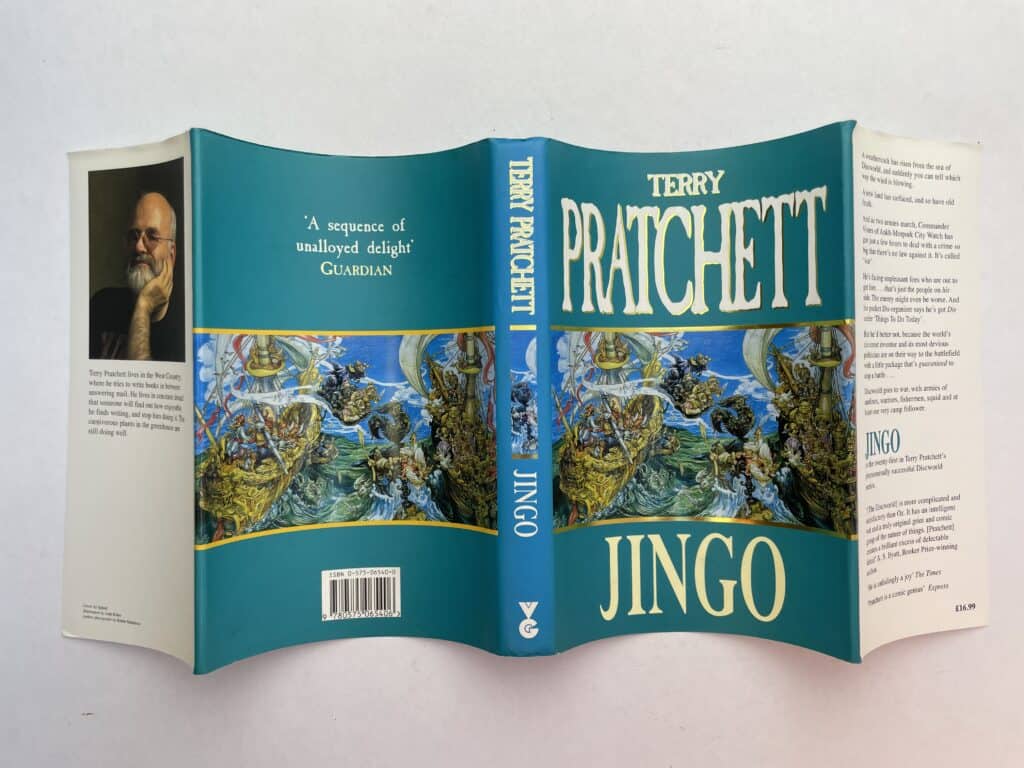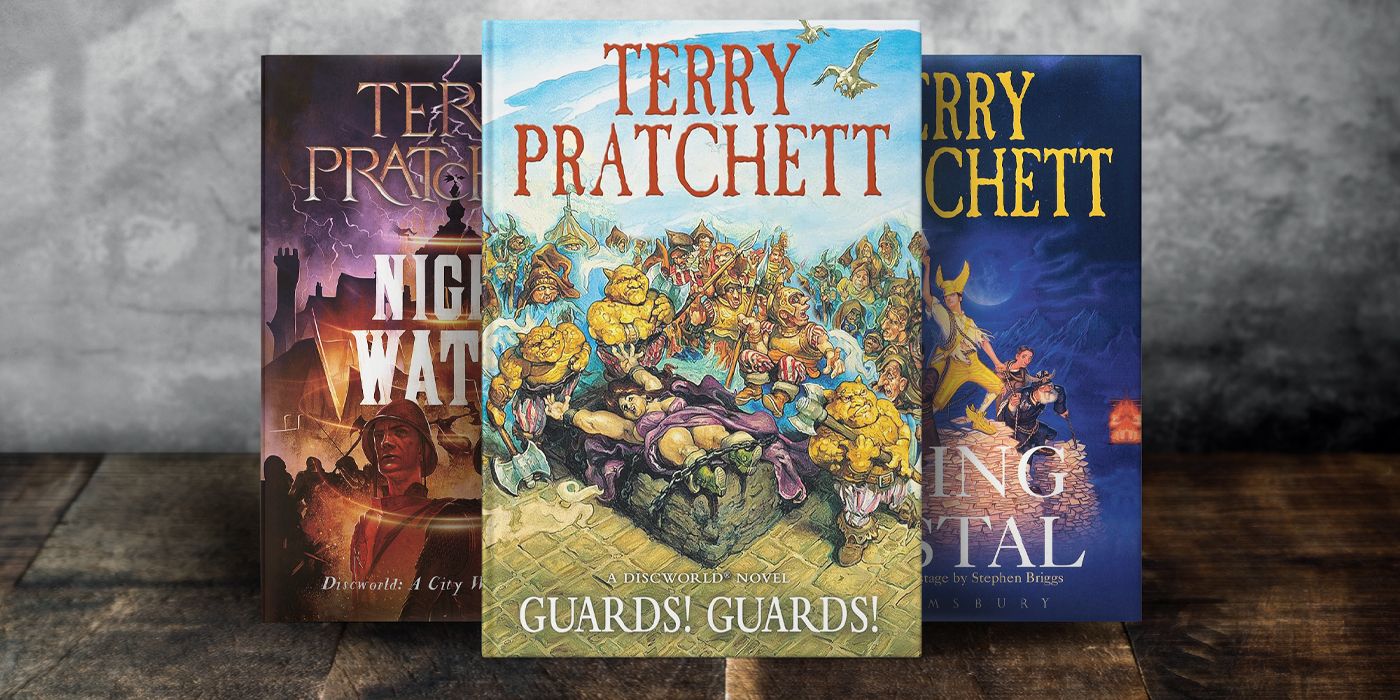Terry Pratchett Books: A Comprehensive Guide to the Discworld and Beyond

Sir Terry Pratchett, one of the most celebrated contemporary English-language authors, left behind a rich and expansive literary legacy with his Discworld series. This comprehensive guide explores the breadth of Pratchett’s work, delving into its various genres, recurring characters, thematic depth, and enduring cultural impact. We will traverse the whimsical landscapes of the Discworld, examining its unique structure, the diverse range of its inhabitants, and the insightful social commentary woven throughout its numerous books.
The Discworld: A World Unlike Our Own, Yet Remarkably Familiar
The Discworld, a flat, magical plane resting on the backs of four elephants standing on a giant space turtle, is Pratchett’s most famous creation. Unlike traditional fantasy series with a linear narrative, the Discworld novels operate more like a collection of interconnected stories. While chronologically ordered, each book generally stands alone, offering self-contained narratives and character arcs. This allows readers to explore the Discworld at their own pace and in any order, though some thematic threads and character development are best experienced sequentially within specific sub-series.
Rincewind the Wizard and the Birth of a World: The Colour of Magic and The Light Fantastic

Pratchett himself cautioned against starting with The Colour of Magic (1983), the first Discworld novel. Written before the series’ immense popularity, it serves as a prologue, introducing the Discworld’s peculiar society, geography, and some recurring characters. The unique writing style—lacking chapters, rich in puns, and featuring meandering footnotes—is immediately evident. The Colour of Magic and its sequel, The Light Fantastic (1986), offer a comical take on the classic fantasy tropes of swords and sorcery, quests, and parallel universes. Rincewind, the inept wizard, and Twoflower, the naive tourist, become unlikely heroes, inadvertently saving the world through a series of misadventures. These two books are the only ones requiring sequential reading to fully appreciate the complete story arc.
Mighty and Mundane Magic: The Unseen University Novels
Pratchett’s exploration of magic on the Discworld takes center stage in the Unseen University novels, focusing on the Disc’s premier institution for the study of magic. These books, spanning several installments, portray a chaotic academic world where professional advancement is often achieved through the elimination of colleagues. The arrival of Arch-chancellor Mustrum Ridcully introduces a pragmatic approach to magic, highlighting the importance of knowing when not to use it. This sub-series contains a significant amount of slapstick humor, offering a satirical look at academic life.

Granny Weatherwax and the Witches of Lancre
Granny Weatherwax, introduced after Rincewind, represents a powerful and independent female character in sharp contrast to the hapless wizard. Granny, along with Nanny Ogg and Magrat Garlick, the three witches of Lancre, form another prominent sub-series. These powerful individuals actively intervene in the affairs of those around them, providing many humorous situations. Pratchett cleverly adapts well-known fairy tales and plays, giving them a distinctive Discworld twist, with instances like the Shakespearean Wyrd Sisters (1988) and the Masquerade (1995), echoing Phantom of the Opera, demonstrating his mastery of parody and satire.

Death and the Exploration of Mortality
I Shall Wear Midnight (2010), written while Pratchett was battling Alzheimer’s disease, showcases the author’s profound reflections on mortality and loss. This book’s complex narrative and exceptional pacing rank among his finest work. Death, a recurring character, transcends his grim role, becoming a surprisingly nuanced and even sympathetic figure, undergoing character development and struggling with the very human aspects of his nature. The Death novels often involve world-ending events caused by the unintentional actions of Death himself, highlighting the irony of his position and exploring themes of life and mortality. Mort (1987), in which Death takes on an apprentice, is another excellent entry point for new readers.
The Ankh-Morpork City Watch: Justice, Morality, and Society
The Ankh-Morpork City Watch novels feature Samuel Vimes, a complex character who evolves throughout the series. Starting as a drunken night watchman in Guards! Guards! (1989), Vimes becomes a symbol of justice and moral growth. Pratchett uses this sub-series to explore societal issues such as prejudice, nationalism, and the consequences of unchecked power, delivering serious social commentary within his trademark humorous style. The dedication from Guards! Guards! epitomizes the series’ playful subversion of fantasy tropes.
The Industrialization of the Discworld: Technology and its Impact
Many Discworld novels examine the effects of technological advancement on society, a theme that increasingly fascinated Pratchett. This exploration is often interwoven with the lives of recurring characters. Moving Pictures (1990), featuring the invention of movies, and The Truth (2000), which introduces printing and journalistic freedom, are key examples. Pratchett’s own journalistic background is evident in The Truth, with its satirical insights into the media and its ethics. The Moist Von Lipwig trilogy (Going Postal, Making Money, and Raising Steam) follows a reformed con man as he revolutionizes the postal service, banking, and railway systems, respectively, providing further commentary on societal changes brought about by technological development.
Beyond the Novels: Expanding the Discworld Universe
Pratchett’s Discworld extends beyond the 41 novels. Companion books, guides, maps, plays, short films, and other media enrich the universe, providing additional context and background for dedicated fans. These supplementary materials are optional but enhance the overall experience.
Conclusion: Embark on Your Own Discworld Adventure
The Discworld is a vast and rewarding literary world. Its unique structure offers exceptional flexibility for new readers. Whether you start with the humorous adventures of Rincewind, the societal commentary of the Ankh-Morpork City Watch, or the profound reflections on life and death, the Discworld promises a captivating and enriching reading experience. With 41 novels and countless other related works, the Discworld offers endless opportunities for exploration and re-reading, revealing new depths of Pratchett’s brilliance with each encounter.